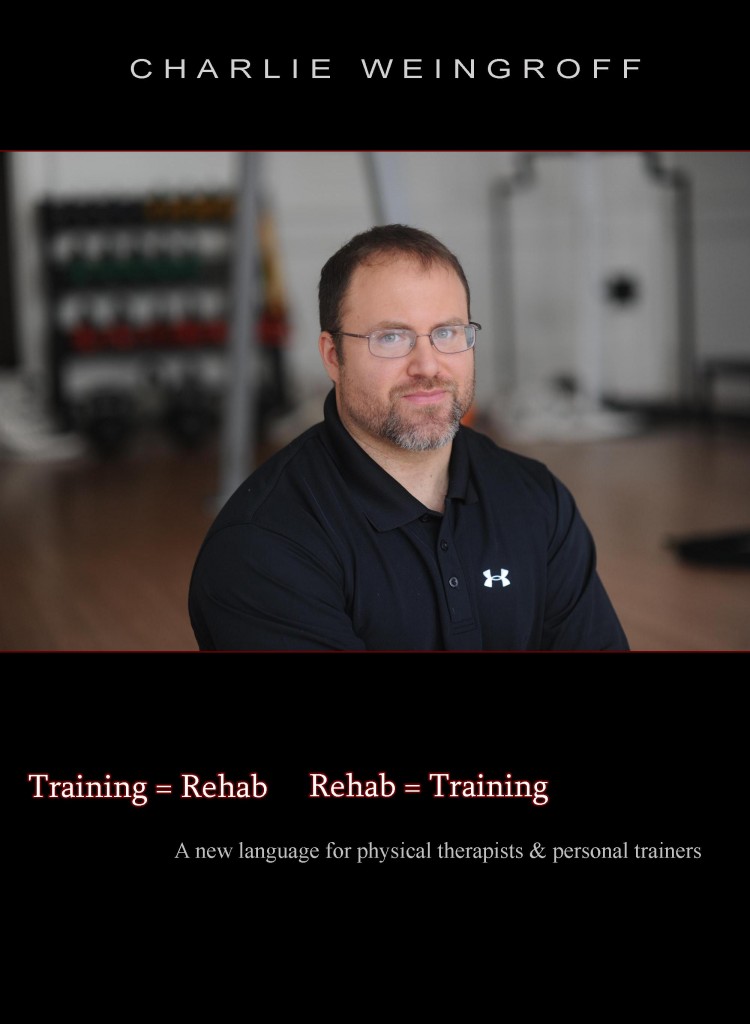Over the last few years I’ve been fortunate to have had opportunities to attend a couple courses from the Prague School of Rehabilitation on “DNS” or Dynamic Neuromuscular Stabilization. If you’re not familiar, DNS uses developmental kinesiology (how the motor cortex of babies develops and how this is expressed in the development of their movement patterns) as a model for viewing human movement. While much of the application of these principles, in my opinion, is better relegated for rehabilitation purposes (and often with special populations), there are many key concepts that are important in the strength and conditioning/athletic development process. Charlie Weingroff has done an outstanding job in describing how many DNS concepts apply to the S&C professionals in his DVDs Training = Rehab, Rehab = Training. You can check out a couple previous posts reviewing the DVDs here:
Among the many applicable concepts, DNS breaks down patterns into ipsilateral/turning or contralateral/crawling distinctions, which can essentially be used as buckets to describe every movement, and discusses muscle roles as being “phasic” (think movement) or “tonic” (think support or postural), depending on the task at hand. Utilizing these concepts, I modified a couple common exercises and developed a highly integrated core exercise. As a quick disclaimer, it’s possible (read: likely) that someone else has already done this exercise, so I’m in no way taking credit for its “invention”, but it was a new idea for me!
Eric Tangradi performing the Short Side Plank w/ Kettlebell Screwdriver
There is a lot going on with this exercise, but a few of the highlights:
- Utilizes a modified mid-position from the ipsilateral turning position described by DNS (and demonstrated by every healthy baby)
- Tonic scap stability work through the bottom shoulder and phasic scap/rotator cuff work through the top shoulder
- Lateral hip and core (e.g. lateral subsystem as described by Thomas Myers, among others) work on the bottom side
- A component of thoracic rotation, which can often become restricted and performance-limiting in hockey players
Give that baby a kettlebell
This exercise can also be performed with the top knee off the ground, which would add a greater element of external rotation at that hip, but potentially limit the thoracic rotation component. In Ultimate Hockey Training, I provide exercise progressions and lateral substitutions for a number of different subsections of “core training”, including Lateral Hip, Lateral Core, Scap Musculature, and the Rotator Cuff. I like this exercise because it integrates all of these aspects of core training into one exercise, which can save time, but ultimately is a more functional option.
If you’re ready to progress on from traditional side planks and ready for a challenge, give this one a shot. As always, if you have any questions feel free to post them below!
To your success,
Kevin Neeld
UltimateHockeyTraining.com
P.S. If you like this exercise, I posted two of my other new favorite core exercises over at Hockey Strength and Conditioning to accompany the dozens of innovative exercise videos that have already been posted there! Not to mention all the articles, programs, and hockey-specific forum threads!
Please enter your first name and email below to sign up for my FREE Athletic Development and Hockey Training Newsletter!



